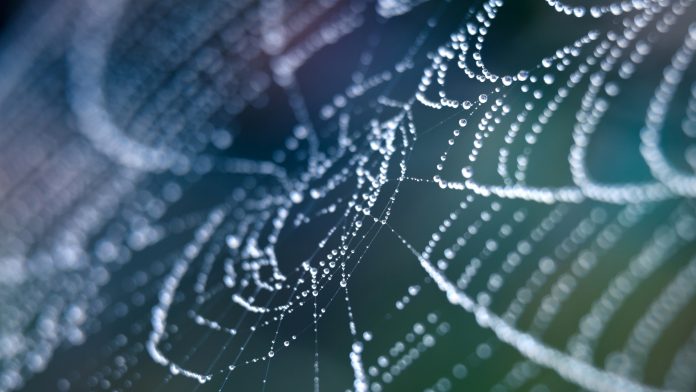Innovators at Purdue University, USA, have modelled a 3D photodetector on the structure of a spider’s web for biomedical imaging.
Purdue researchers used the structural architecture of a spider’s web to integrate a fractal web design with system-level hemispherical 3D photodetector, thereby offering several excellent mechanical adaptability and damage-tolerance against various mechanical loads.
Chi Hwan Lee, a Purdue assistant professor of biomedical engineering and mechanical engineering, said: “We employed the unique fractal design of a spider web for the development of deformable and reliable electronics that can seamlessly interface with any 3D curvilinear surface. For example, we demonstrated a hemispherical, or dome-shaped, photodetector array that can detect both direction and intensity of incident light at the same time, like the vision system of arthropods such as insects and crustaceans.”
Lee said the structure provides unique capabilities to distribute externally induced stress throughout the threads according to the effective ratio of spiral and radial dimensions and provides greater extensibility to better dissipate force under stretching. The 3D photodetector can also tolerate minor cuts of the threads while maintaining overall strength and function of the entire web architecture.
Lee added: “The assembly technique presented in this work enables deploying 2D deformable electronics in 3D architectures, which may foreshadow new opportunities to better advance the field of 3D electronic and optoelectronic devices.”
The innovative 3D optoelectronic architectures are attractive to those developing photodetection systems, as they require a large field of view and wide-angle antireflection, which will be useful for many biomedical and military imaging purposes.
The team published their findings in Advanced Materials, stating: ‘The device is first fabricated on a planar Si wafer at the microscale and then transferred to transparent hemispherical domes with different curvatures in a deterministic manner. The unique structural property of the fractal web design provides protection of the device from damage by effectively tolerating various external loads.’








